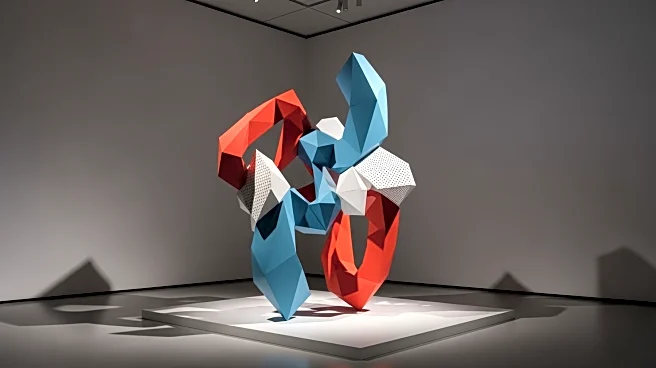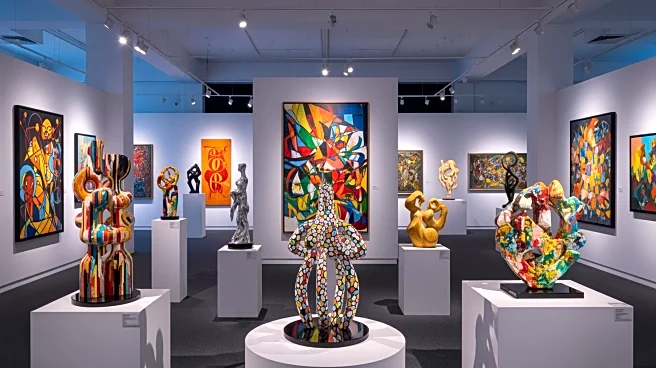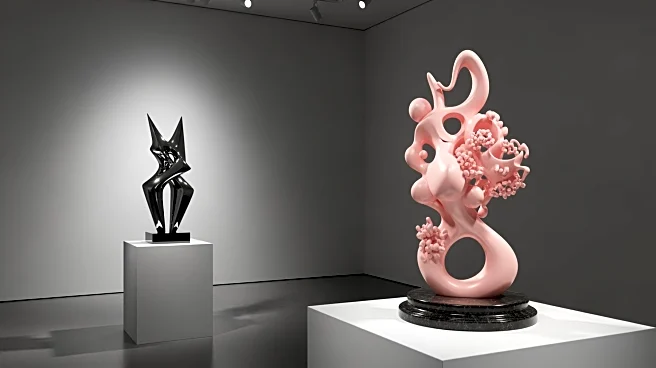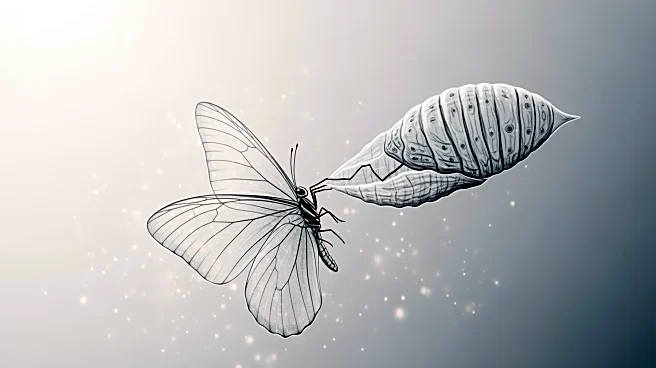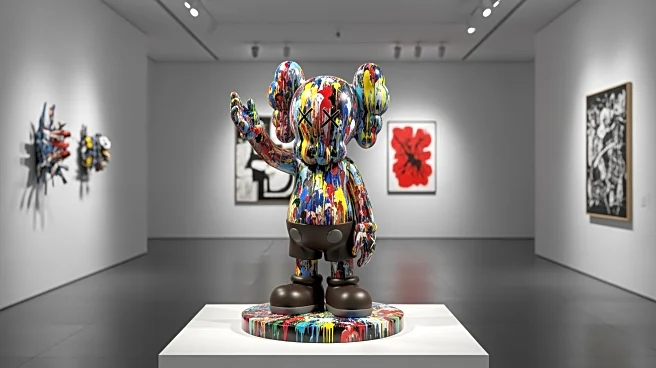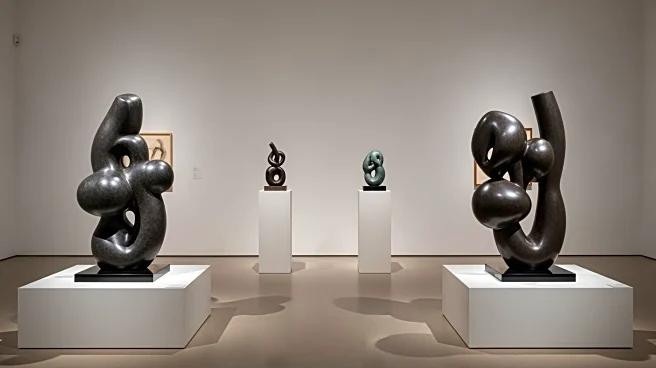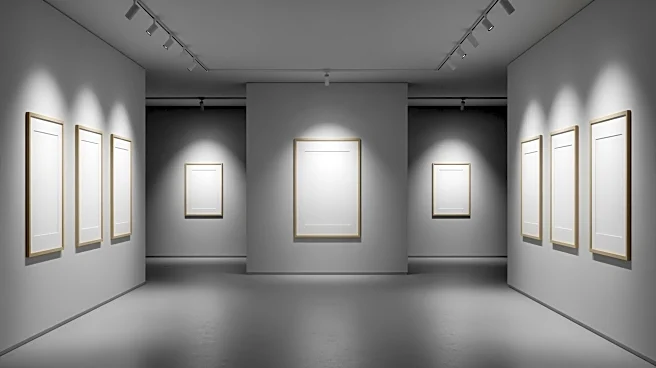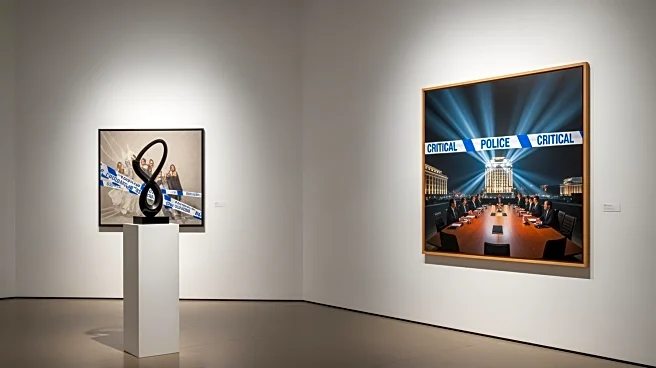What's Happening?
Aki Sasamoto, a Japanese artist known for her innovative performance and installation art, is showcasing her work at the Museum of Contemporary Art Tokyo. The exhibition, titled 'Aki Sasamoto’s Life Laboratory,'
is a mid-career survey that highlights her unique approach to art, which combines absurd sculptural devices with improvised performances. Sasamoto's work often involves humorous narratives and physical actions, creating a dynamic interaction between objects and performers. The exhibition traces the evolution of her practice, showcasing installations, documentation, and live performances that explore the relationship between dance, sculpture, and storytelling.
Why It's Important?
Sasamoto's work challenges traditional boundaries between art forms, offering a fresh perspective on performance art. Her approach, which integrates dance, sculpture, and spoken word, provides a unique commentary on human interaction and the role of objects in performance. This exhibition not only highlights her innovative techniques but also contributes to the broader discourse on contemporary art practices. By blending different artistic elements, Sasamoto's work encourages audiences to reconsider the ways in which art can be experienced and understood, potentially influencing future artists and art forms.
What's Next?
The exhibition at the Museum of Contemporary Art Tokyo runs until November 24, providing an opportunity for art enthusiasts and the general public to engage with Sasamoto's work. As her practice continues to evolve, it may inspire new collaborations and projects that further explore the intersection of performance and installation art. Additionally, Sasamoto's approach to using objects as scores for performances could lead to new developments in how art is created and presented, influencing both artists and curators in the field.
Beyond the Headlines
Sasamoto's work raises questions about the longevity and preservation of performance art. By allowing objects to perform independently, she challenges the notion of the artist's presence as essential to the work, suggesting that art can have an extended lifespan beyond the human body. This perspective may lead to new methods of documenting and preserving performance art, ensuring its accessibility to future generations.
